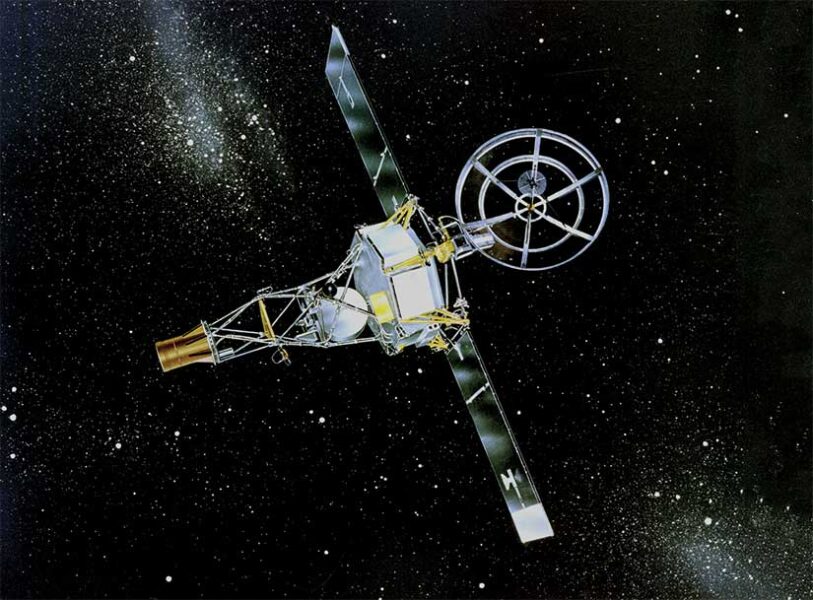
The planets in our solar system began coalescing 4.6 billion years ago from the whirling disk of debris cooling around the infant Sun. As they gained in mass, they invited a cosmic barrage of ice, rock, and metal that tapered and swelled in waves until the great accretion was complete a few hundred million years later.
On Earth, as the impact blasts died down, the surface and atmosphere cooled. Lava and steam gave way to rock and rain. Organic molecules began to complexify, and then, wonder of wonders, started to reproduce themselves. This unleashed 4 billion years of biospheric activity. Very recently, all of this evolving finally produced an inquisitive species that looked, with wonder and calculation, to the skies, becoming aware of those other sibling worlds born of the same pre-solar cloud. Curiosity and imagination begat technology. Earth’s deep gravitational well became a solvable problem. We were no longer stuck here.
Fifty years ago, on August 27, 1962, our planet’s accretion began a curious reversal. Earth started hurling pieces of matter back out into the wider solar system from which, long ago, everything once fell. Our fragile, instrument-laden metallic bugs began to cross the interplanetary void, seeking perspective on our origins and place.
The first of these probes to reach its target was NASA’s Mariner 2 to Venus. With an audacious flyby on December 14, 1962, humanity began to gather the missing pages of our origin story, scattered throughout the solar system among the ancient surfaces and alien clouds of our brethren worlds.
Mariner 2 showed that Venus’s mysterious microwave brightness was, as some had proposed, coming from the surface and not the upper atmosphere. This told us that our “twin planet” was too hot for surface water and our kind of life. And it posed a puzzle about climate evolution: how could two such nearby and similar worlds evolve such different surface environments?
In the ensuing 50 years we’ve sent spacecraft to all of the terrestrial and giant planets, and New Horizons is approaching the ice-dwarf planets that ring our solar system. We have also confirmed that our planetary system is not a freak of nature.
In this same time span, Earth’s human population has more than doubled and atmospheric carbon dioxide has increased by nearly 25%. Some say we’ve entered a new geological era, the “anthropocene,” in which human activity dominates changes occurring on our planet. If we’re not running this place already, sooner or later we will be if present trends continue. But do we really know what we’re doing? Nobody gave us an operating manual. We had better figure out how planets work.
In the next 50 years we’ll learn a lot more by continuing to explore our local planets and characterizing the variety of planets around other stars. The next generation of Venus missions will follow the trail blazed by Mariner 2. They will search for the secrets of ancient climate change by looking under the hood at the engine of another Earthlike planet.
“Human history becomes more and more a race between education and catastrophe,” wrote H. G. Wells nearly a century ago. The legacy of Mariner 2 and its successors is a crash course in comparative planetology that may help us win that race.
This article originally appeared in print in the October 2012 issue of Sky & Telescope. Subscribe to Sky & Telescope.
 0
0
Comments
You must be logged in to post a comment.